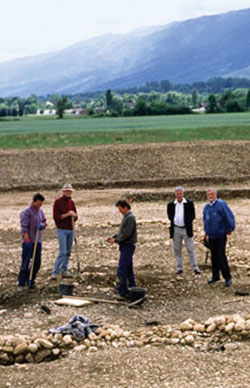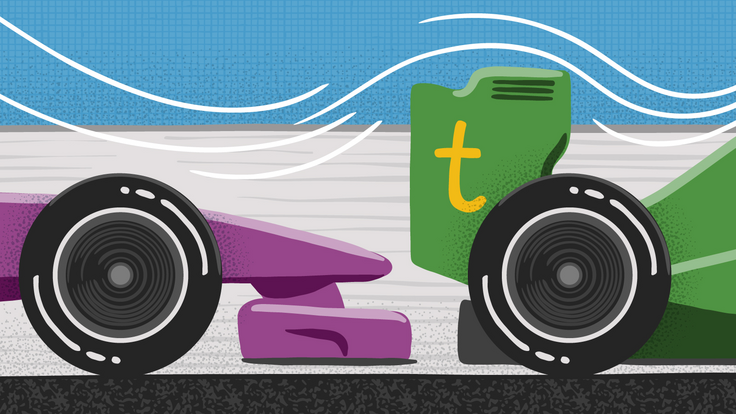An LHC detector's old Roman roots
Particle physicists probe uncharted territory for remnants of the early universe.
But that is supposed to occur after their experiments turn on.
In the case of the Compact Muon Solenoid experiment at CERN's Large Hadron Collider, the discovery of ancient relics began when workers started digging a cavern 100 meters deep to house the 12,500-metricton detector.
“The first thing we found was the last thing you would ever want in a construction site—a Roman farm from the fourth century AD,” says Lyn Evans, LHC project leader.
 |
| Photo courtesy of NOvA |
Fortunately, the farm's villa sat off to the side of the detector shaft and building footprint, allowing CMS crews to continue work while archeologists toiled nearby for nearly two years. During lunch breaks, workers on the CMS shaft wandered over to watch pots, coins, and stone walls emerge from the dirt.
“We had big earth movers, and they had tooth brushes,” says John Osborne, project manager for CMS civil engineering. “It was quite interesting to see the difference in excavation.”
Eventually, all but the farm's stone walls were removed and sent to a museum in France.
The walls aligned perfectly with modern-day farm boundaries. Unfortunately, they also sat where the innards of the CMS detector hall were to rest. So workers carefully covered the ruins with layers of blankets, sand, gravel, and rock.
“They are buried again,” Osborne says. “But they are protected so archeologists could return to excavate in the future.”
The CMS detector sits in the town of Cessy in eastern France, an area where the Romans battled the Gauls in the third century. Later, between 50 and 45 BC, Julius Caesar founded a Roman colony near the present town of Saint-Genis-Pouilly, whose boundaries encompass a large portion of CERN. The ruins of Roman villas, as well as coins, medals, silverware, jewelry, and graves from that period, have been found in the village, according to the tourism office.
Among the most notable things recovered in the CMS dig are coins minted in three areas, including sites near Rome and London.
“This proves the United Kingdom, at least during the fourth century, was part of a single European currency,” Evans jokes.
Tona Kunz
Click here to download the pdf version of this article.






